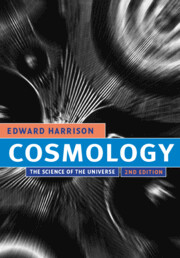24 - Darkness at night
from PART III
Published online by Cambridge University Press: 05 June 2012
Summary
Deep into the darkness peering, long I stood there, wondering, fearing,
Doubting, dreaming dreams no mortal ever dared to dream before.
Edgar Allan Poe, The Raven (1845)THE GREAT RIDDLE
An inferno of stars
There is a simple and important experiment in cosmology that almost everybody can perform. It consists of gazing at the night sky and noting its state of darkness. When we ask, why is the sky dark at night? (Figure 24.1) the natural response is the Sun is shining on the other side of the Earth and starlight is weaker than sunlight. It takes an unusual mind to realize that the relative weakness of starlight is of cosmological significance, and such a person was the astronomer Johannes Kepler, imperial mathematician to the emperor of the Holy Roman Empire.
In a forest (Figure 24.2), a line of sight in any horizontal direction must eventually intercept a tree trunk, and the distant view consists of a background of trees. Similarly, on looking away from Earth at night, we see a “forest” of stars (Figure 24.3). If the stars stretch away endlessly, a line of sight must eventually intercept the surface of a distant star. The distant view of the universe should consist of a continuous background of bright stars with no separating dark gaps.
- Type
- Chapter
- Information
- CosmologyThe Science of the Universe, pp. 491 - 514Publisher: Cambridge University PressPrint publication year: 2000
- 1
- Cited by

